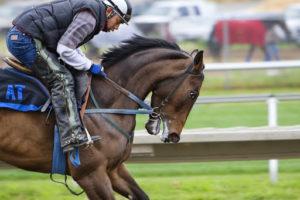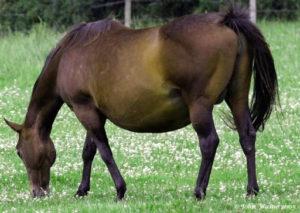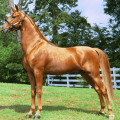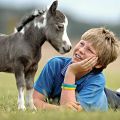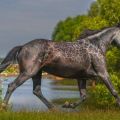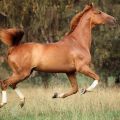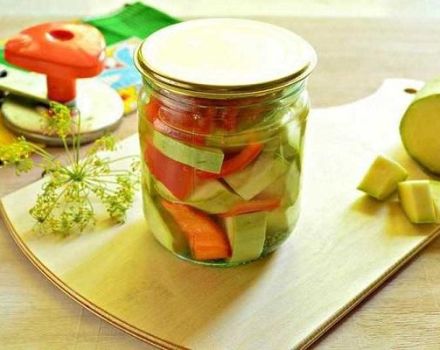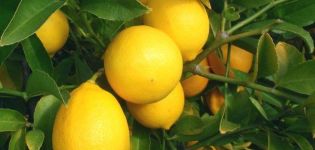Description and features of Holstein horses, maintenance rules and price
For many centuries, horses have been used as a working animal in agriculture and warfare. Today Holstein horses are obligatory participants in colorful exhibitions and active competitions. The animals stand out for their confident and strong gait, noble posture, and the ability to keep balance. Flexibility meets power elegantly.
Historical data about the breed
The first mentions of the breed are found in German documents. The ancestors of the Holstein were powerful draft horses. The use of Arabian, Spanish, and Barbary horses has brought strong changes to the exterior of the Holstein horses. The pedigree book of the breed was opened in 1886.
Description of horses
Today Holsteins are considered one of the best sports breeds. Fast and graceful horses show intelligence, ability to train. Therefore, it is not surprising that the breed is loved and respected in the equestrian world.
Exterior and suits
Holsteins show athletic build. Characteristic physical data: an arched broad chest, a muscular long croup and a narrow strong back, an elongated head, high lean legs with round hooves. At the withers, the height of the Holstein is 167-175 cm. Common colors: black with white spots, red, gray, dark chestnut and bay.
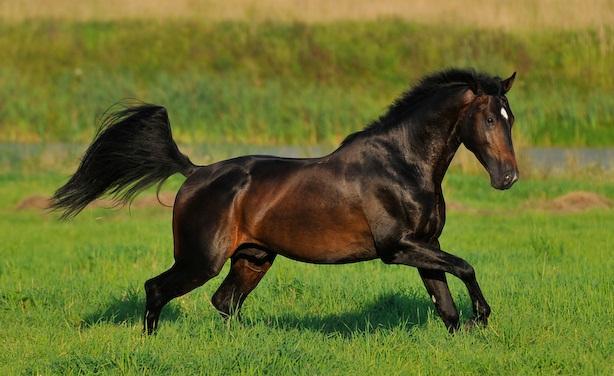
The nature of the animals
Endurance, friendly disposition are the main qualities of horses. Thanks to their quick-wittedness and perseverance, the Holsteins confidently win the competition. These unpretentious animals have a calm character, during training they show a noble disposition.
Productive qualities of the breed
The numerous advantages of the Holstein people allow them to be used for various purposes. First of all, representatives of the breed are constant participants in all kinds of sports competitions. Endurance, agility, speed are the qualities thanks to which strong horses win prizes. Perfect jumping technique allows Holsteins to stand out in show jumping.
Pros and cons of Holstein horses
Advantages of the breed: excellent physical parameters, spectacular exterior, calm and friendly character, submission to training, not conflicting. The advantage of the Holsteins is a soft step. The rider is comfortable in the saddle when the horse is kept evenly both in the gallop and in the trot.

The breed has no particular flaws.Features include an excitable temperament, but this is not considered increased nervousness. Naturally, so that the horse does not have bad habits (the habit of backing away when stopping, biting the bit), it must be constantly and patiently trained.
Content rules
The main requirement for keeping animals is the presence of a stable and corral. For a Holsteiner, it is important to stay in the fresh air for a long time, on the green grass in the open air. You can keep horses in wooden and brick stables. The former are inexpensive, but wear out quickly. Brick structures are more reliable and durable, but they have a high cost. Any premises are equipped with ventilation, heating, windows.
For each individual, a separate area is fenced off - a stall. The floor must be strong, water-resistant and cold-resistant. The concrete base is sheathed with boards. The bedding in the stall must be dry, otherwise the dampness will cause the hooves to rot
Advice! When arranging the floor, be sure to maintain a slight slope towards the aisle.
Feeding and drinking
When forming the diet and feeding rules for Holsteins, it is necessary to take into account the peculiarities of the horse's digestive system. It is important to adhere to a specific feeding regimen.

Experts recommend following several rules:
- The horse's digestive system must be constantly working. Therefore, the animals are often given small portions of food;
- if you plan to introduce new feed or additives, do it gradually;
- the drinker should always have water to prevent dehydration of the animals. It is recommended to warm up the water in winter.
The animal is not fed immediately before / after exercise. It is necessary to withstand an hour interval. In the heat and during strong physical exertion, the volume of water for drinking is increased (daily portion - 20-30 liters).
Correctly formulated diet
A Holsteiner should have constant access to hay, chopped straw, since structured carbohydrates are the basis of nutrition (daily intake - 7-9 kg). The diet should contain complex carbohydrates (corn, oats, barley). The daily allowance (200 g of grain per 45 kg of animal weight) is divided into 3-4 portions. The feed is pre-crushed, steamed and given in the form of porridge.

Advice! As required, the feed is enriched with vitamin and mineral supplements.
Breeding features of the breed
You need to decide on the purpose of horse breeding. If a breeding group is being drawn up, the parameters by which stallions and mares are rejected are taken into account:
- round or flattened head, oblique profile, short ears;
- low or high growth at the withers (permissible parameter - from 167 to 180 cm);
- short neck, curved back line;
- short croup, short or not strong enough legs.
Rejected individuals are not allowed to compete. If it is not planned to declare a Holsteiner at competitions or exhibitions, then they do not adhere to special requirements for breeding. Any of the above disadvantages will not interfere with quiet walks or the use of animals in equestrian schools.

Diseases and methods of their treatment
It is recommended to bring the horse for a veterinary check every six months. Sudden lameness can be caused by trauma or inflammation of the hooves, tumors (calluses) on the sole. First aid can be provided on your own: horses provide rest, fine sand is poured onto the floor in the stall to balance the load on the legs. Inflammatory processes are removed by non-steroidal anti-inflammatory drugs (Aspirin, Flunixin).
Also, horses can suffer from diseases of the gastrointestinal tract, respiratory diseases. The main prevention of diseases is to ensure the correct conditions of detention (no drafts, in a dry, warm room).The key to the active development and growth of the animal will be a properly selected diet, the use of fresh feed.
The cost
It is impossible to determine the average price for a horse, since the cost is influenced by the pedigree and purpose of the horse, age, breed, skills, physical characteristics and disposition. Common suggestions are a trained adult animal and a foal. Naturally, for a trained Holsteiner participating in competitions, they will ask for a solid price - from a million rubles. Prices for foals from thoroughbred titled parents are lower - they start from 300 thousand rubles.
Where is the horse used?
Traditionally, animals were used as riding horses, in military cavalry and in postal services. Also in demand among farmers. Today, Holsteiners actively participate in individual competitions (most often in show jumping, dressage disciplines) and in crew races. The breed also actively participates in exhibitions, is used in horse rental. Today, keeping noble animals is an expensive pleasure. Holsteiners are often acquired by horse-riding enthusiasts. Riders appreciate the balanced and gentle gait of thoroughbred horses.
